Upregulation of Twist-1 by NF-kappaB blocks cytotoxicity induced by chemotherapeutic drugs
- PMID: 17403902
- PMCID: PMC1900008
- DOI: 10.1128/MCB.01219-06
Upregulation of Twist-1 by NF-kappaB blocks cytotoxicity induced by chemotherapeutic drugs
Abstract
NF-kappaB/Rel transcription factors are central to controlling programmed cell death (PCD). Activation of NF-kappaB blocks PCD induced by numerous triggers, including ligand engagement of tumor necrosis factor receptor (TNF-R) family receptors. The protective activity of NF-kappaB is also crucial for oncogenesis and cancer chemoresistance. Downstream of TNF-Rs, this activity of NF-kappaB has been linked to the suppression of reactive oxygen species and the c-Jun-N-terminal-kinase (JNK) cascade. The mechanism by which NF-kappaB inhibits PCD triggered by chemotherapeutic drugs, however, remains poorly understood. To understand this mechanism, we sought to identify unrecognized protective genes that are regulated by NF-kappaB. Using an unbiased screen, we identified the basic-helix-loop-helix factor Twist-1 as a new mediator of the protective function of NF-kappaB. Twist-1 is an evolutionarily conserved target of NF-kappaB, blocks PCD induced by chemotherapeutic drugs and TNF-alpha in NF-kappaB-deficient cells, and is essential to counter this PCD in cancer cells. The protective activity of Twist-1 seemingly halts PCD independently of interference with cytotoxic JNK, p53, and p19(ARF) signaling, suggesting that it mediates a novel protective mechanism activated by NF-kappaB. Indeed, our data indicate that this activity involves a control of inhibitory Bcl-2 phosphorylation. The data also suggest that Twist-1 and -2 play an important role in NF-kappaB-dependent chemoresistance.
Figures
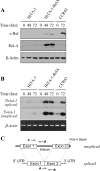
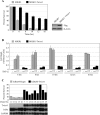
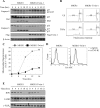
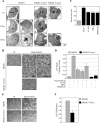
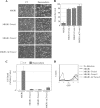
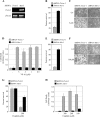


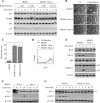
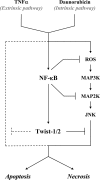
Similar articles
-
The NF-kappaB-mediated control of the JNK cascade in the antagonism of programmed cell death in health and disease.Cell Death Differ. 2006 May;13(5):712-29. doi: 10.1038/sj.cdd.4401865. Cell Death Differ. 2006. PMID: 16456579 Review.
-
Induction of gadd45beta by NF-kappaB downregulates pro-apoptotic JNK signalling.Nature. 2001 Nov 15;414(6861):308-13. doi: 10.1038/35104560. Nature. 2001. PMID: 11713530
-
Regulation of death receptor expression and TRAIL/Apo2L-induced apoptosis by NF-kappaB.Nat Cell Biol. 2001 Apr;3(4):409-16. doi: 10.1038/35070096. Nat Cell Biol. 2001. PMID: 11283615
-
N-(4-hydroxyphenyl)retinamide inhibits invasion, suppresses osteoclastogenesis, and potentiates apoptosis through down-regulation of I(kappa)B(alpha) kinase and nuclear factor-kappaB-regulated gene products.Cancer Res. 2005 Oct 15;65(20):9555-65. doi: 10.1158/0008-5472.CAN-05-1585. Cancer Res. 2005. PMID: 16230421
-
Linking JNK signaling to NF-kappaB: a key to survival.J Cell Sci. 2004 Oct 15;117(Pt 22):5197-208. doi: 10.1242/jcs.01483. J Cell Sci. 2004. PMID: 15483317 Review.
Cited by
-
Effects of flavopiridol on critical regulation pathways of CD133high/CD44high lung cancer stem cells.Medicine (Baltimore). 2016 Oct;95(43):e5150. doi: 10.1097/MD.0000000000005150. Medicine (Baltimore). 2016. PMID: 27787370 Free PMC article.
-
Cellular processes of v-Src transformation revealed by gene profiling of primary cells--implications for human cancer.BMC Cancer. 2010 Feb 12;10:41. doi: 10.1186/1471-2407-10-41. BMC Cancer. 2010. PMID: 20152043 Free PMC article.
-
PD-L1 Expression Is Regulated By NF-κB During EMT Signaling In Gastric Carcinoma.Onco Targets Ther. 2019 Nov 25;12:10099-10105. doi: 10.2147/OTT.S224053. eCollection 2019. Onco Targets Ther. 2019. PMID: 31819504 Free PMC article.
-
Normal and disease-related biological functions of Twist1 and underlying molecular mechanisms.Cell Res. 2012 Jan;22(1):90-106. doi: 10.1038/cr.2011.144. Epub 2011 Aug 30. Cell Res. 2012. PMID: 21876555 Free PMC article. Review.
-
Oncogenic KRas suppresses inflammation-associated senescence of pancreatic ductal cells.Cancer Cell. 2010 Nov 16;18(5):448-58. doi: 10.1016/j.ccr.2010.10.020. Cancer Cell. 2010. PMID: 21075310 Free PMC article.
References
-
- Basu, A., G. DuBois, and S. Haldar. 2006. Posttranslational modifications of Bcl2 family members—a potential therapeutic target for human malignancy. Front. Biosci. 11:1508-1521. - PubMed
-
- Carroll, A. G., H. J. Voeller, L. Sugars, and E. P. Gelmann. 1993. p53 oncogene mutations in three human prostate cancer cell lines. Prostate 23:123-134. - PubMed
-
- Castanon, I., and M. Baylies. 2002. A twist in fate: evolutionary comparison of Twist structure and function. Gene 287:11-22. - PubMed
-
- Chen, Z. F., and R. R. Behringer. 1995. twist is required in head mesenchyme for cranial neural tube morphogenesis. Genes Dev. 9:686-699. - PubMed
Publication types
MeSH terms
Substances
Grants and funding
LinkOut - more resources
Full Text Sources
Other Literature Sources
Research Materials
Miscellaneous
